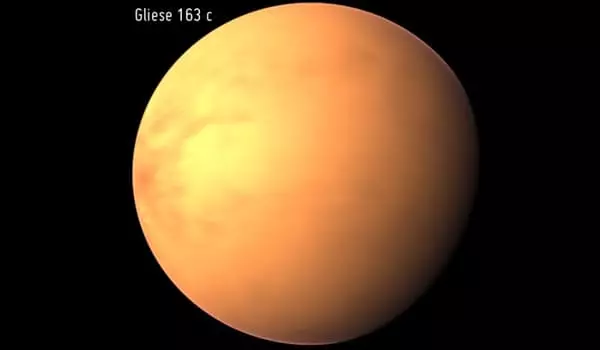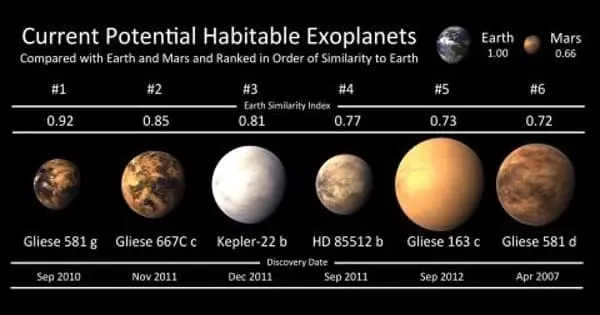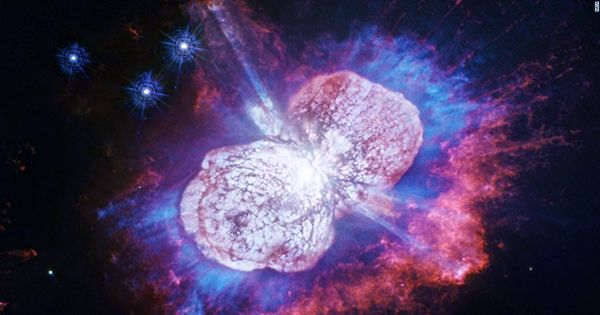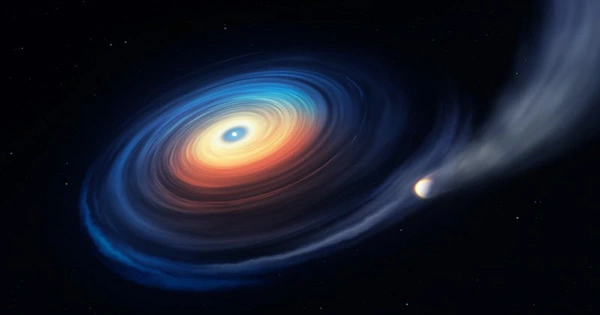GJ 163 c is an exoplanet that resembles Neptune and orbits an M-type star. It is a potentially habitable exoplanet that orbits the M dwarf star Gliese 163 in its habitable zone. It has a mass of 6.8 Earths, takes 25.6 days to complete one orbit around its star, and is 0.1254 AU away from it. It was discovered in 2013 and was announced at the time.
Gliese 163c was one of two alien planets discovered orbiting the star Gliese 163, which is located in the Dorado constellation about 50 light-years from Earth. The team discovered evidence of a third planet but cannot confirm it at this time. Gliese 163c, which is about seven times the mass of Earth, could be a rocky planet or a dwarfed gas giant, according to researchers.
Astronomers using the HARPS instrument announced the discovery of two planets orbiting Gliese 163 in September 2012. The first planet, Gliese 163 b, is a super-Earth or mini-Neptune with a 9-day orbital period that is far too hot to be considered habitable. Gliese 163 c, with an orbital period of 26 days and a minimum mass of 6.9 Earth masses, was considered potentially habitable, despite being hotter than Earth, with a temperature of 60 degrees Celsius (140 degrees Fahrenheit). It has an ECC. of 0.03 or 3 percent. Evidence for a third planet orbiting further out than c and b was also discovered.

The parent star is located in the constellation Dorado, 15.0 parsecs (approximately 49 light-years or 465 trillion kilometers) from the Sun. Gliese 163 c is one of five discovered planets in the system. It is classified as a super-Earth if its mass is at least 7.2 times that of the Earth (a planet of roughly 1 to 10 Earth masses).
Gliese 163c’s size could range from 1.8 to 2.4 Earth radii, depending on whether it is mostly made of rock or water. It receives 40% more light from its parent star than Earth does from the Sun, making it hotter. In comparison, Venus receives 90 percent more sunlight than Earth. We don’t know the properties of Gliese 163c’s atmosphere, but if it’s a scaled-up version of Earth’s atmosphere, its surface temperature could be around 60°C.
Gliese 163c, which orbits at the inner edge of the habitable zone, takes 26 days to orbit its parent star, which is much fainter than our sun. Gliese 163b, the second planet, has an orbital period of only nine days, while the third unconfirmed planet circles from afar.
Out of the over 2,300 exoplanets that have yet to be confirmed, NASA’s Kepler Mission has discovered approximately 27 potential habitable exoplanet candidates. Some of these bodies appear to be Earth-like. Unfortunately, they are much further away from us than Gliese 163, making future observations nearly impossible to determine whether they are truly habitable worlds.
















